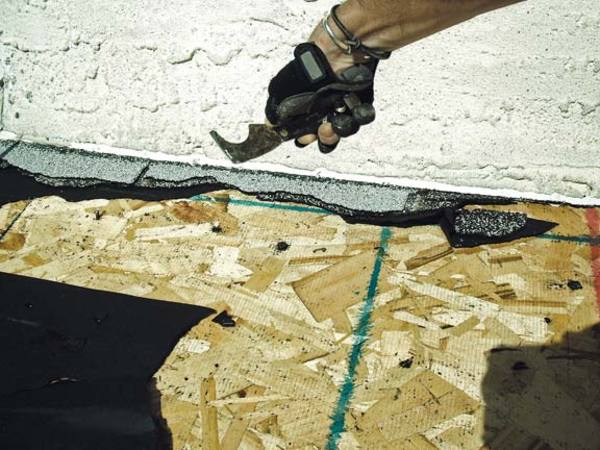My 5-in-1 tool has a permanent spot in my tool pouch. I rely on it for thankless removal work—paint, wood, masonry, caulk—and employ it as a shim and lever for working doors, molding, and more.

Most 5-in-1 tools are configured the same: a semi-sharp steel blade comprises the working end; a wood or rugged plastic handle makes up the other. The blade’s 1½” cutting edge scrapes, cuts, and chips. The tip gouges and slices. The blunt side (like a slot-head screwdriver) opens paint cans. The C-shaped relief is for removing paint roller covers from roller frames. The handle’s blunt end can function as a makeshift hammer.
Even better? The tool is usually inexpensive, and every one I’ve owned has worked great.
Where to Use It
I use the blade’s cutting edge for jobs from brutal to fine. On a single porch remodel, I used the blade to chisel and pry loose stucco, chipping out square inches in multiple layers. I scraped umpteen coats of paint from the corners of a window, then pulled the blade backwards across the wood to burnish a thin blind stop I couldn’t quite reach with sandpaper, removing excess paint and swirl marks from my power sander. I scraped over-applied wood-filler prior to sanding. Elsewhere, I’ve used it to remove thinset in tile repairs. Ironically, the one thing I haven’t been able to do well with the blade—billed as a putty spreader—is spread putty.
The pointed tip is perfect as a gouge for tight, often tricky situations like opening painted-shut windows, removing grout, or piercing caulk beads. My 5-in-1 also sneaks behind a piece of trim—like crown molding—to snug a joint just right before nailing. It can wedge a door while I install a lockset, and it also works great for removing hinge pins. Many 5-in-1 handles are meaty enough to use as a small hammer in a pinch, and can also dimple drywall (with a firm press-and-twist) where a screw has been removed.
What to Look For
The blade needs to be semi-sharp for most removal work, from gouging grout to prying trim. But when you need a sharp, burr-free cutting surface—say, for removing paint on woodwork—the key to transitioning from fracturing to finessing is to put an edge on the blade. A bench grinder, sharpening station, or even a belt sander works. I re-sharpen all the time.
I’ve had wood- and plastic-handled tools; both are tough, but both have worn out after incessant abuse, too. If pressed, I’d give the durability edge to the plastic-handled tools, but a wood-handled tool—where the blade tang runs all the way through—gives great service and dampens more vibration from relentless use and abuse.
The Bottom Line
Whoever named the 5-in-1 tool clearly underestimated its usefulness—to the avid old-house restorer, it’s more like a 500-in-1 tool.
Carpenter Mark Clement is working on his century-old American Foursquare in Ambler, Pennsylvania, and is the author of The Carpenter’s Notebook.







